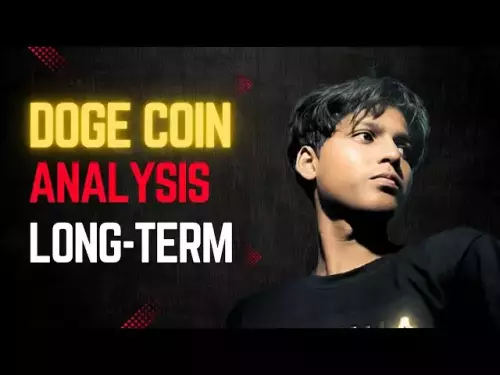Dogecoin's wild ride continues as companies gamble on its future, leading to dramatic stock crashes and raising questions about its long-term viability.

Dogecoin's journey from internet meme to a corporate treasury asset has been nothing short of bizarre. But is it a savvy investment or a recipe for disaster? Recent events, including a significant stock crash, have investors on edge.
Dogecoin Dreams Turn Sour: CleanCore's Plunge
CleanCore Solutions, a NYSE-listed company, recently made headlines by announcing a bold move: putting Dogecoin at the heart of its treasury strategy. Spearheaded by Alex Spiro, Elon Musk’s attorney and CleanCore's new board chairman, this plan involved a $175 million private placement to acquire DOGE as the company's primary reserve asset. But the market reaction was brutal. The company's shares plummeted over 54% following the announcement, proving that investors weren't exactly thrilled with the meme-inspired pivot. Major backers of this private placement included Pantera, GSR, FalconX and Borderless.
A Familiar Pattern of Dogecoin Disappointments
CleanCore isn't the first public company to venture into the Dogecoin treasury game, and its experience echoes the struggles of others. Several companies who adopted similar strategies in 2025 have seen disappointing results. For instance, Spirit Blockchain Capital, despite announcing Dogecoin yield generation plans, has lost a staggering 88% of its value year-to-date. Similarly, Bit Origin, previously a Chinese pork producer, saw its shares fall approximately 64% after announcing a $500 million Dogecoin treasury plan. Even Dogecoin itself has declined about 33% during 2025, showcasing its inherent volatility.
Why the Doge Hype?
Despite the risks, Dogecoin's appeal lies in its low transaction costs, high liquidity, and strong internet branding. It acts more like digital working capital – fast, cheap, and culturally relevant – making it attractive for engaging with crypto communities and experimenting with micropayments. However, its inflationary supply and price swings driven by social sentiment pose significant challenges.
Pepeto: A New Meme Coin Contender?
While Dogecoin faces scrutiny, a new memecoin, Pepeto (PEPETO), is emerging as a potential leader in the 2025 cycle. Pepeto distinguishes itself from prior memecoins such as Shiba Inu and Pepe, both of which saw significant price surges before facing substantial pullbacks, by introducing a more structured ecosystem, including its decentralized exchange, PepetoSwap, which facilitates zero-fee trading, and PepetoBridge, which enables secure cross-chain transfers. The project has raised over $6.4 million in its presale phase, with a current token price of $0.000000149, with early investors attracted to high staking rewards. The tokenomics of Pepeto are designed to align with community interests and encourage long-term participation. The model includes no team wallets and no trade taxes, features that are rare in the typically speculative memecoin space.
The KuMining Angle
Beyond corporate treasuries and new meme coin contenders, platforms like KuCoin are trying to democratize crypto mining. KuCoin's KuMining platform offers access to Bitcoin and Dogecoin hashrate, aiming to make industrial-scale mining accessible to a wider audience. This initiative seeks to decentralize hashrate away from institutional control, providing auditable data and transparent fulfillment.
The Verdict: Risky Business with a Dash of Meme Magic
Investing in Dogecoin, or any meme coin for that matter, is a high-stakes game. The potential for quick gains is undeniable, but the risk of significant losses is equally real. CleanCore's stock crash serves as a cautionary tale, highlighting the dangers of betting the farm on a cryptocurrency driven by hype. While Dogecoin's journey continues, investors should tread carefully and remember that in the world of meme coins, what goes up must eventually come down…or at least take a detour to the moon and back!







































![Litecoin Price Prediction [LTC Crypto Price News] Litecoin Price Prediction [LTC Crypto Price News]](/uploads/2025/09/03/cryptocurrencies-news/videos/litecoin-price-prediction-ltc-crypto-price-news/68b83c0a82563_image_500_375.webp)





































